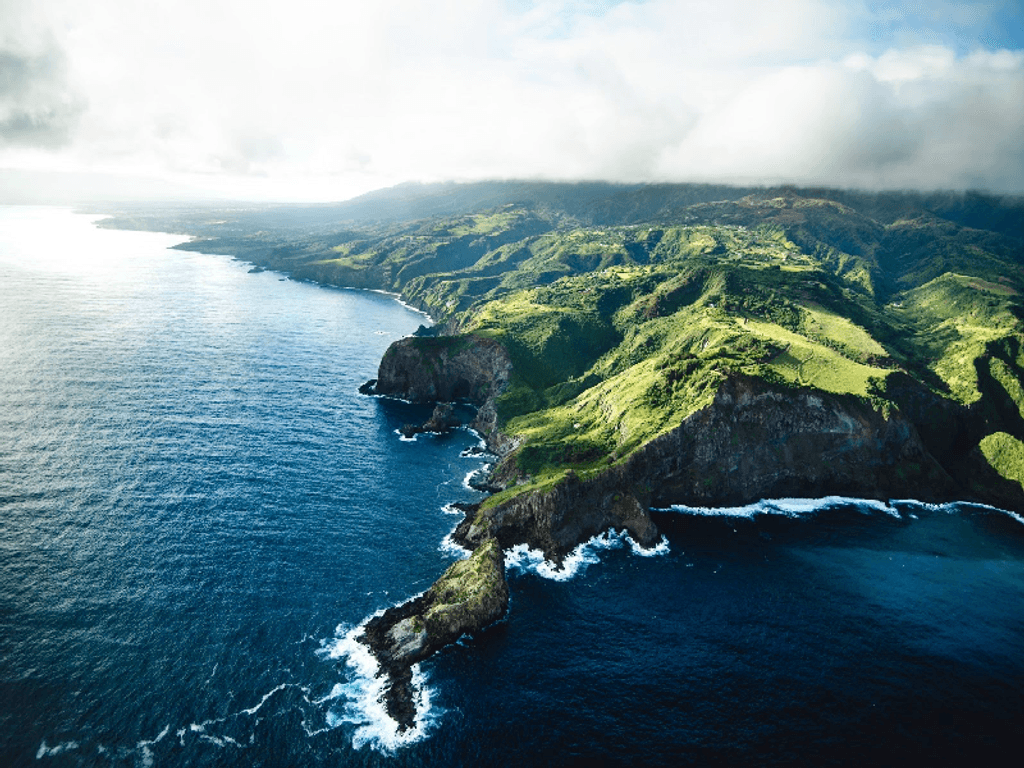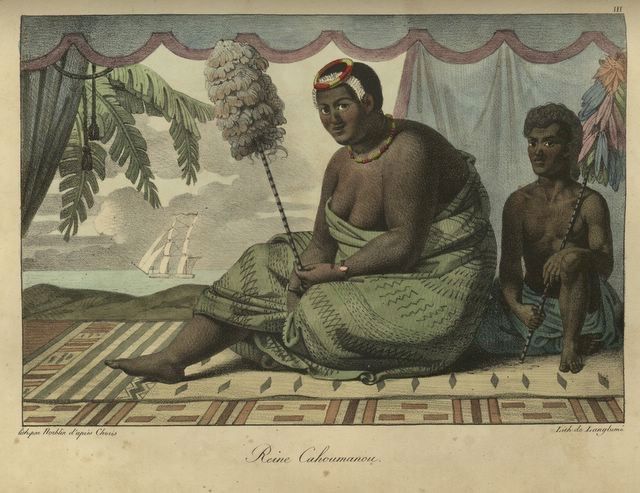
History of Maui Part 1
November 25, 2019
Oh, tall is the tale of the mischievous one
Who fished out all the islands and captured the sun His deeds and tasks I will unmask
So that you'll understand
That before there was a Clark Kent
There was a Hawaiian Superman
He fished out all the islands with a magic hook
There would've been more but somebody looked
He pulled morning sky, the sun he entwined
To slow down his flight, so kapa could dry
Mischievous, marvelous, magical Maui
Hero of this land
The one, the only, the ultimate Hawaiian Supaman
Oh Maui, Maui, Maui, Hawaiian supaman
Oh Maui, Maui, Maui, Hawaiian supaman
- Israel Kamakawiwo’ole
To tell the history of Maui, you must first start with the story of the demigod Maui, from which the island gets its name. As told in the iconic song, Maui fished out the Hawaiian Islands from the sea. From the top of Haleakalā, he lassoed the sun to slow it’s progress across the sky and make the days longer. As the legend goes, it was his superhuman deeds that made the island of Maui into the enchanting oasis that it is.
Ancient Maui
Geologically speaking, the island of Maui began forming some 750,000 years ago, fed by the firey guts of two volcanoes - first Haleakalā and then Mauna Kahalawai. Compared to other places on earth, the Hawaiian Islands are quite young. The Rocky Mountains, for instance, were formed at least 55 million years ago. For millennia, Maui and the other Hawaiian Islands remained uninhabited.
Maui’s first human settlers were incredibly skilled seafaring voyagers from Polynesia. Sources differ on the exact dates of first human settlement, but it is understood that several different waves of settlers arrived between the 6th and the 12th centuries from the Marquesas and Tahiti. Settlers came by great sailing canoes, built to carry sixty or more people and all their supplies for voyages of some 2,000 miles across the Pacific. With them, they carried the ‘canoe plants’ that would become Hawaiian staple crops like taro and breadfruit. Settlers from Tahiti would become the ruling class of Ali’i (chiefs), imposing kapu law and influencing the culture. Under the kapu system, each island was divided into twelve Moku (districts) which were subdivided into Ahupuaʻa, or sections of land running from the mountains to the sea.

Each district contained a sanctuary, or Pu’uhonua. Ancient Hawaiian society did not have prisons. Breaking the kapu laws was punishable by death. The only alternative was to run, or swim to the nearest Pu’uhonua, where the offender could seek a pardon and blessing from a priest. None of the historical Pu'uhonua sites have been preserved on Maui, however on the Big Island, Pu’uhonua o Honaunau has been restored and preserved as a National Historical Park and is open to the public for tours.
European Contact
While the first official contact recorded by Europeans with the island of Maui isn’t until the late 18th century, it is believed that Europeans may have washed ashore earlier as castaways. Spanish sailors were known to be navigating through the waters surrounding the Hawaiian Islands as early was the 16th century.
The first European of official record to reach the shores of Maui was the French admiral Jean-François de Galaup, comte de La Pérouse, who landed at what is now known as La Perouse Bay on May 29, 1786. Some eight years earlier, In 1778, Captain James Cook was the first westerner to spot Maui. He traded with Hawaiians who paddled canoes out to his ships the Discovery and the Resolution and was visited by Maui’s chief Kahekili.
Cook was the first westerner to officially set foot on the Hawaiian Islands, first on Kauai and Ni’ihau in 1778 and then on the Big Island in 1779 at Kealakekua Bay. Cook was later killed in an armed standoff at Kealakekua Bay in 1779 after he fired on a Hawaiian and fighting broke out. The introduction of guns and cannons to the Hawaiian Islands by early explorers would have a profound impact on the final battles fought between Hawaiian chiefs for control over the island chain.
Kamehameha I vs. Maui’s Chief Kahekili
The island of Maui was the site of several significant battles. Two major players were Kamehameha I of the Big Island of Hawaii, and Maui’s chief Kahekili. In 1790, Kamehameha I attacked the island of Maui while Kahekili was away on O'ahu. Kamehameha pursued Kahekili's son Kalanikupule and his forces deep into 'Iao Valley. Many died in the bloody battle of Kepaniwai, meaning “the damning of the waters” due to the bodies that piled up in the river which ran red with blood. Kamehameha's warriors used two western style cannons in the battle.
However, Kehekili did not relinquish control after the battle of Kepaniwai. Four years later, in 1794, Kamehameha would return to finally conquer the island of Maui. By 1810, unification of the Hawaiian Islands as one kingdom under King Kamehameha I was complete. The Kamehameha Dynasty would rule the islands for the next 100 years.

Queen Ka’ahumanu
The favorite wife of King Kamehameha I, Queen Ka’ahumanu, was born on Maui in 1768. She was known for her great beauty and stature, standing six-foot tall, with dark wavy hair striking features. She was the only daughter of High Chiefs Ke’eaumoku and Namahana. After the death of King Kamehameha I in 1819 and succession of his young son Iolani Liholiho to the throne, Queen Ka'ahumanu assumed the role of kuhina nui (similar to a prime minister). Along with Liholiho’s mother Queen Keopuolani, she was instrumental in ending the kapu system and challenging the limited roles played by women. Famously, they ate with Liholiho in public, breaking the kapu of men and women eating separately.

Ka’ahumanu was receptive to the missionaries from the U.S. Mainland that began arriving in the Hawaiian Islands in 1820. She would learn to read and write and become baptized. Ka’ahumanu became an advocate for adopting western ways of living, helping to build schools and churches. She was a controversial figure for those that wanted to preserve traditional Hawaiian ways of living.
As royals like Ka’ahumanu daringly embraced western customs and beliefs brought by missionaries, the seeds of a vast shift, far beyond what anyone could have imagined were planted. As the 19th century began, Maui and the Hawaiian Islands as a whole were on the cusp of drastic change that would alter the course of Hawaii’s future forever.
Read the next blog post, History of Maui Part 2, to learn about the arrival of missionaries in Maui, how they clashed with Lahaina’s raucous sailors, and more interesting events from the 19th century up to the present day.